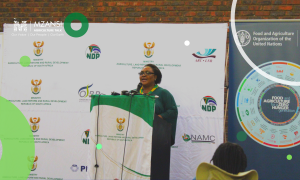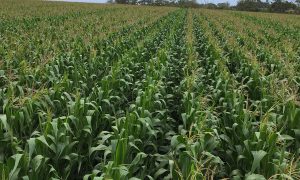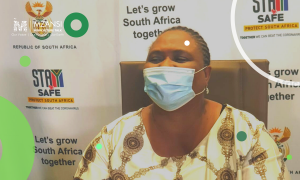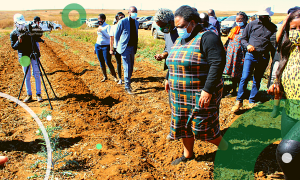ARTICLE BY: Dr. Moses H. Lubinga (Senior Economist: Trade Research) and Dr. Ndiadivha Tempia (Senior Manager: Markets and Economic Research Centre) at the National Agricultural Marketing Council in Pretoria
Introduction:
Despite that the many indigenous crops that have been grown in the country for many decades in the past, South Africa’s agricultural sector is based on a few commercialised crops. The most important summer crops produced at commercial scale include maize, soybeans, sunflower seed, groundnuts, and sorghum (South Africa online, 2022). Other grain crops include wheat, barley & oats (GrainSA, 2015). Whereas implementation strategies have been put in place, such as the Bio-economy Strategy (an initiative of the Department of Science and Innovation (DSI), formerly Department of Science and Technology – DST), which clearly mentions some of the under-utilised and under-developed value chains through which the agricultural sector can diversify by commercialising other indigenous crops, there is still a need for role players in the sector to quickly embrace the implementation thereof. The urgent need for action by role players takes cognizance of the eminent high levels of concentration noted in the agricultural sector (Competion commission, 2021), coupled with hastening effects of climate change.
According to the South African Grain Service (SAGIS, 2020), the observed decline in the production of summer crops between 2014 and 2019 was due to the prolonged drought experienced in the major summer grains and oil seeds growing areas, i.e., the central and western parts of the country. This commentary aims at providing insights into how more investment in the under-utilised and under-developed value chains will contribute to the deconcentrating of the crop sub-sector (and the agricultural sector at large). Some of the underutilised and underdeveloped value chains identified by the DSI include cassava, amadumbi, cowpea, sweet potato, and bambara groundnut, among others.
Deconcentarting the agricultural sector for economic growth:
In accordance with the Competition Act No. 89 of 1998, concentration as used in this context relates to the ownership and control/participation in commodity value chains. Thus, a value chain is said to be highly concentrated if it is characterised by excessive ownership and control or participation in thereof by a small proportion of firms. According to the Competition Commission (2021), the agricultural sector is highly concentrated by the largest 10% of the registered tax paying firms, accounting for about 79.7% of the sectors’ turnover while the Small Medium Enterprises (SMEs) falling within the bottom 50% tier of firms only assume 1.6% share ot the total turnover. This implies that there is a high level of inequality in the distribution of firm income (turnover) between the largest 10% of the agricultural firms and SMEs.
Furthermore, the Competition Commission (2021) reckons that the seeds market and the processing of grains, among other aspects of the food value chain are controlled by only three (3) firms, accounting for over 90% while for the fertilisers, about 70% of the market is also dominated by three (3) firms. Whereas there are many participants involved in primary production, about 67% of the total income generated in the sector accrues to large firms which only assume 6.5% of all participants, yet small firms which account for the largest proportion (26.7%) are only responsible for 18.5% share of the income (Stats SA, 2017). From the grain processing perspecive, there are many processors but 50% of the production of the six (6) out of the eight (8) grain types is controlled by the top three (3) largest firms. This renders difficulty to new entrants, including black emerging farmers who may not be able to produce at a sustainable scale. All in all, participartion in the crop sub-sector, paticularly in highly concentrated value chains such as the grains is very limited.
What must be done?
For the South African economy to address the prevailing tripple burden of high unemployment (over 30%), poverty (income inequality) and food insecurity (at household level), while at the same time working towards deconcentrating the agricultural sector, there is an urgent need to invest more in, and to promote under-utilised and under-developed value chains. For instance, new value chains (cassava, cowpea, bambara groundnut or amadumbi) present an opportunity for new entrants to participate in the multiplication and distribution of phytosanitory approved planting materials within local communities, especially if the distribution rights are not limited to a handful of market participants. With producers getting access to the right plant materials, other value chain actors (processors/manufactures, traders, logistics service providers, … etc) are bound to join, thereby creating job opportunities.
Furthermore, these under-utilsed and under-developed value chains tend to rely more on indigenous knowledge which rests heavily with people living in rural areas. In so doing, income is bound to trickle to rural communities where production of such indigenous crops that are generally resilient to changes in weather parterns is practiced by many emerging farmers. More investment should entail increasing expenditure on research and development (R&D) as well as awareness creation about market access, health benefits and income generation possibilities from these neglected value chains. This is bound to stimulate innovation, participation by various value chain actors, enhance food security at household level while complementing the few existing commercialised value chains and diversification in our food basket.
The ongoing conflict between Russia and Ukraine offers an opportunity for policymakers to reflect on the over-reliance on imports. In the long-run, the agricultural sector is bound to deconcentrate while also mininising green housegas (GHG) emissions. The highly concentrated value chains in the crop sub-sector are in part anchored on ineffective competition law policies that cannot on their own achieve required inclusive transformation of agricultural sector. Thus, there is a need to revisit legislation and regulations, licensing and procurement, investment incentives, support services and technology development policies whereby SMEs become more empowered to participate more in such value chains.
References:
- DST (2015). The Bio-economy: Agricultural sector implementation plan, 2015.
- Stats SA (2017). Census of Commercial Agriculture, 2017: Financial and production statistics http://www.statssa.gov.za/publications/Report-11-02-01/Report-11-02-012017.pdf
- South African Grain Information Service (SAGIS) 2020. Monthly imports and exports. https://www.sagis.org.za/monthly_imp-exp%20.html
- South Africa online (2022). Field crops in South Africa. https://southafrica.co.za/field-crops-in-south-africa.html
- Competition Commission (2021). Measuring concentration and participation in the South African economy: Levels and trends. Summary report of findings and recommendations. https://www.compcom.co.za/measuring-concentration-and-participation-in-the-south-african-economy-levels-and-trends/
Disclaimer: The views and opinions expressed in this article are those of the author. They do not purport to reflect the opinions or views of the National Agricultural Marketing Council (NAMC), Mzansi Agriculture Talk or its members.




















